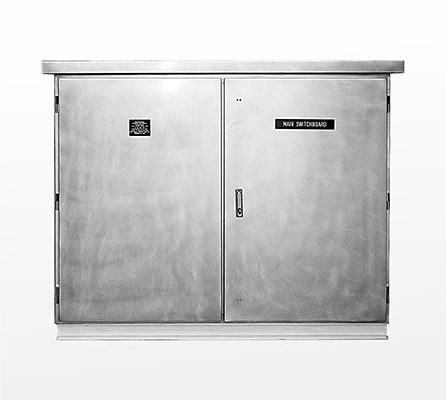Switchboards are typically made from sheet metal; the most common materials are steel and aluminium. Both steel and aluminium offer unique properties that make them suitable for switchboard construction, and the choice between them depends on factors such as cost, weight, strength, and environmental considerations.
Steel:
Strength: Steel is known for its high strength and durability, making it suitable for heavy-duty applications. Switchboards made from steel can withstand mechanical stress, impacts, and vibrations.
Fire Resistance: Steel has good fire-resistant properties, which is crucial for electrical enclosures to protect against potential fire hazards.
Corrosion Resistance: Modern steel switchboard enclosures are often coated with protective finishes, such as powder coating or galvanisation, to enhance corrosion resistance and prolong the lifespan of the switchboard.
Cost: While steel is generally more affordable than aluminium, the cost can vary based on the grade of steel and additional coatings or treatments.
Aluminium:
Lightweight: Aluminium is lighter than steel, making it easier to handle during installation and transportation. This can be advantageous in applications where weight reduction is a priority.
Corrosion Resistance: Aluminium naturally forms a protective oxide layer on its surface, providing inherent corrosion resistance. This makes aluminium switchboards suitable for outdoor or corrosive environments.
Conductivity: Aluminium has good electrical conductivity, which is important for ensuring efficient electrical connections within the switchboard.
Aesthetic Appeal: Aluminium switchboards often have a sleek and modern appearance, making them popular for applications where aesthetics are important.
Cost: While aluminium is generally more expensive than steel, it’s lightweight properties and corrosion resistance can offset some of the initial costs over time, especially in harsh environments.
Ultimately, the choice between steel and aluminium for switchboard construction depends on factors such as budget, application requirements, environmental conditions, and design preferences. Both materials are widely used and offer reliable performance when manufactured and installed according to industry standards and best practices.

